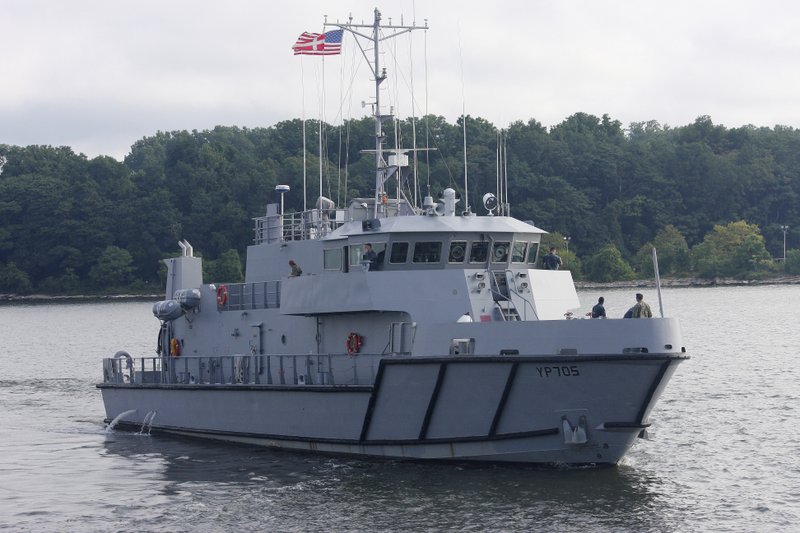ANNAPOLIS, Md. -- Lt. Devan Gurecki remembers feeling uneasy the first time she set foot on the bridge of a Navy ship. All she knew about warships, she had learned in officer candidate school classrooms. Suddenly, she was a lookout on the bridge and giving directions.
"I literally walked on board my ship the first day, and they threw me on the bridge, and I was like, 'wait, really? There's no qualification except for my ensign bars?"' she said.
Now, as an instructor for the U.S. Naval Academy's Yard Patrol program, she's glad to see the military college host about 80 future naval officers from Navy ROTC. The training is designed to make students put their classroom navigation knowledge to use at sea. It's the first time Navy ROTC students have participated in the academy's unique, decades-old training program.
Interest in the Yard Patrol program has increased as the Navy explores how to prevent collisions at sea like the ones last year in the Pacific that led to the deaths of 17 sailors in separate incidents involving the USS Fitzgerald and the USS John S. McCain. The college has reviewed its seamanship and navigation training curriculum, including the Yard Patrol program, as part of a larger Navy review. Vice Adm. Ted Carter, the academy's superintendent, told the academy's board that the motor skills midshipmen learn in the ships, known as YPs, are valuable.
"If we can get the other community to get even a basic touchstone of some YP time, it will make a difference," Carter, referring to Navy ROTC, told the board, which includes members of Congress and is similar to a board of trustees at a civilian college.
Lt. Carlton Smith, who graduated from the academy in 2012 and is now a trainer, said the program enables students to start building muscle memory needed to drive a ship.
The program teaches students basic "rules of the road" at sea and how to maneuver around other ships. Students also stand watch, conduct drills and learn about the routine of being aboard. Students work as a team to navigate the ship, plotting positions and communicating with other vessels in the area.
A Section on 09/02/2018

